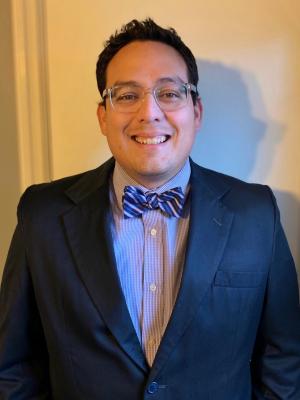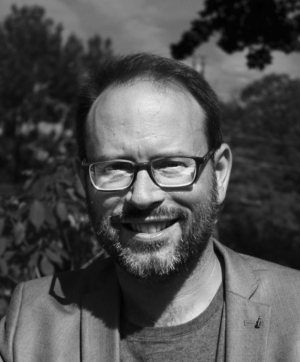Resources

During my teaching experience in Zambia, music became an important part of the day-to-day life of my students’ coursework. When I first asked the students to share about things they valued from their own culture, one of the elements they mentioned was their love for music. As I was to later find out, this love of music did not refer to music theory or a song being played. Rather, it is a way of living out their culture and experiencing life through music. Music was everywhere in Zambia: in my students’ homes, in their schools, in their churches, and in their houses of worship, for example. Music was to be experienced and led to a form of embodiment, or at the very least recognizing that as human beings we are embodied in our everyday visceral reality. I also found myself making connections to my own Latinx ethnicity. For example, many individuals of Latinx heritage also share an African heritage. Several countries in Latin America have been marked by racial intermixing between Africans, Amerindians, and Europeans. There is even a growing field of study of the Afro-Latino experience. I recently did a DNA test and discovered that at least 10 percent of my DNA is African. It was surprising, but in my Latinx experience it was a heritage that was suppressed and ignored, although the cultural influence was undoubtedly there. I thought that perhaps engaging music would be a way to connect my own heritage to the experiences of these students in Zambia. And concomitantly, perhaps the use of music could lead to an embodied experience in the classroom where we could build bridges between our cultures, ethnicities, and races. I knew that I had to improvise in my lesson plans to accommodate this important cultural element in the classroom. I asked each student to prepare a song for one of our teaching sessions during our time together. Because I had 12 students, I asked some of them to pair up. I was specific and asked for songs that they sing for worship in their own country and that were relevant to the course content, but they had the freedom to choose the song. I encouraged them not to use digital sources, but to sing or play the songs in their own way. When the first student presented her song, her voice carried over the class. It was an old hymn that the students immediately recognized (I did not). The students all joined together in their singing. Their bodies swayed and some raised their hands. In this expression, their bodies were present, involved, and recognized. It brought to memory the book by Estrelda Alexander, Black Fire, where she traces the importance of African spirituality in Pentecostalism and describes the body-mind-spirit correspondence of their worship.[1] For my students, music was a corporeal and corporate experience. As an instructor who was present in this environment, I was stating by my mere presence, “Yes, you and I are different; but we can enjoy these musical arrangements together. We can share in this special moment. We are together in this class. We are on equal footing.” Music gave them a legitimacy to express themselves. In listening, I demonstrated that they were valued. Their contributions as authentic as they were to their context were not dismissed or looked down upon, or even looked over. Their voices mattered. Their culture mattered. Their skin tone mattered. I was deeply appreciative of the resourcefulness of my students despite having little or no resources. Music was one way that this resourcefulness played out. For example, the students sang together. Sometimes, it seemed they were singing two different melodies, yet their differences complemented each other. They would also use their hands to clap or use sticks to keep the beat and rhythm. I was amazed at how they all wanted to participate in this experience. If they didn’t know the lyrics, they hummed along. After the singing, the class seemed to come together. Not only were student’s minds engaged in the course content, but their bodies, attitudes, and culture were involved also. I concluded that music is a wonderful resource. It is able to change a person’s mood. It is able to create a certain ambiance or environment. It is also something that is shared if everyone is listening to the same thing. All the participants move to the music together. The classroom was not just a foreign Honduran-American telling students how to think or what to think. Rather, it created space for meaningful engagement. As I return to the US, I want to make music a part of my courses. Whether we sing old hymns or modern music, it is important to honor the cultures, ethnicities, and races of my students. This is one way to engage them. I know students may have reservations about singing, but at the very least they can bring a video clip to play in class through web services like YouTube. Whether it is online or in person, sharing in music is an activity that all can participate in [1] Estrelda Y. Alexander, Black Fire: One Hundred Years of African-American Pentecostalism (Downers Grove: IVP Academic, 2011).

When I go to work in the morning, the first thing I do is read the Bible. I read a bunch of commentaries, take a bunch of notes, then prayerfully reflect on the text. Then I set to work coming up with a meaningful and compelling way of communicating my interpretation to my listeners. Then I lift the piano lid. You see, I’m a composer of sacred music. At its heart, my job is to present an interpretation of Scripture to my listeners in a way that is interesting, convincing, and spiritually valuable. Unfortunately, few Christians ever hear my sacred music. That’s because I don’t write choral anthems or praise songs. I write sacred concert music: classical works that responds to themes, ideas, and texts from the Christian tradition. I’ve written a piano trio inspired by the book of Job, a song cycle that sets Rilke poems, and a brass quintet that explores the concept of perichoresis. (Humblebrag: of this piece, Walter Brueggemann wrote to me: “I am not a great theologian but have pondered “perichoresis” for a long time. This is the finest exposition of that thick idea that I have encountered.” Be still my beating heart!) Now, if I wrote a lot of choral music, I wouldn’t be complaining nearly as much. But today, most of history’s great church music composers face the same problems as me. While we do hear choral works by Bach, Handel, and Mendelssohn occasionally on Sunday mornings, the place where we usually encounter their sacred music is in the concert hall. This is an example of a strange irony: though most of us have nearly unlimited access to the corpus of great sacred music–either live or on Spotify-we Christians rarely have the chance to intentionally explore its spiritual value in the context of Christian community. As a result, we are missing out on the many ways sacred music can contribute to our lives as Christians–beyond its role in worship. In this post I’d like to provide a case study of a way that a different approach to sacred music can contribute to our work as educators. First, take about 15 minutes to listen to three new musical settings of Psalm 148 (scroll down for texts and info about each setting). Each was written in 2019 by a contemporary composer representing a different Christian tradition: Roman Catholic, Evangelical Lutheran, and Armenian Apostolic. Now that you’ve listened, let me ask you a question: which of these pieces interpreted the psalm correctly? Obviously, this is not the right question to ask. Yet it’s a familiar one, as it’s the one that so many students initially bring to the task of Biblical interpretation. And as educators, we know that ridding a student of this hermeneutic habit is the very first thing we need to accomplish in our classes. Listening to these three musical settings makes this easy. Each piece is an authentic, honest, and personal response to a rich and mysterious text. Each provokes us to think about the psalm in a completely different way: not just encouraging us to provide different interpretations of the psalm, but to ask completely different kinds of questions about it–and of ourselves. Heard back-to-back, the three settings testify incontrovertibly to the possibility–and, I might add, the necessity–of complementary, mutually-enriching interpretations of the same text. If we are going to teach the next generation of pastors, theologian, and laypeople, we know that these are the attitudes toward Scripture that we need to promote. More than anything, we need to convince our students to devote themselves to a lifetime of continuous exploration and re-exploration of our tradition. Beyond that, we need to encourage them to develop an attitude of humility, an awareness of the contingent nature of our own interpretations, and the courage to ask complex questions and follow them where they may lead. Sacred music helps us accomplish these goals. It opens up the field of interpretation by inviting us to engage with the Bible in ways that are not ideological, simplistic, or narrow, but instead subjective, affective, and open-ended. But this can only happen if we think creatively about new ways to use it in our classrooms and our churches. My new organization Deus Ex Musica, which developed the project culminating in the videos you watched, is my own humble attempt. For more than a millennium, composers have given us unique, powerful, and provocative musical interpretations of Scripture. They continue to do so today. In a world that increasingly promotes simple, ideologically-driven solutions to problems, I think sacred music has the potential to remind us that our tradition is rich, mysterious, and resistant to easy answers. Whether you are an educator, pastor, or layperson, I encourage you to seek out opportunities to explore the ways it can contribute to your ministry and your life of faith. Thanks for listening!